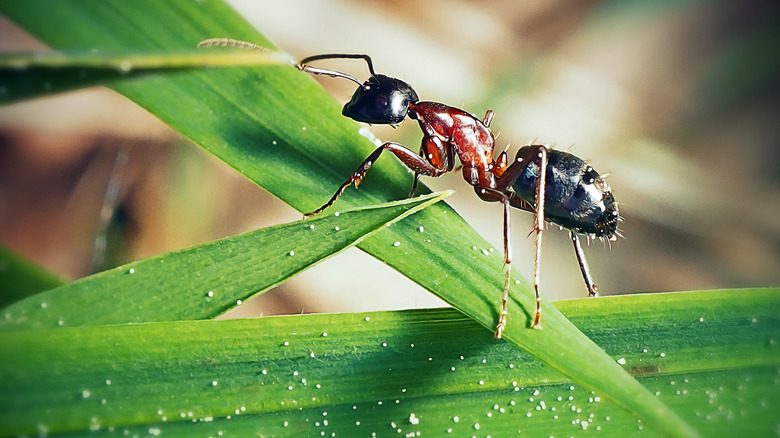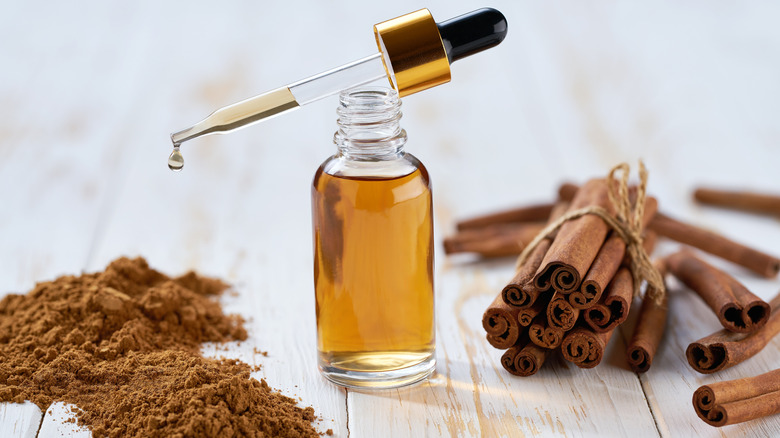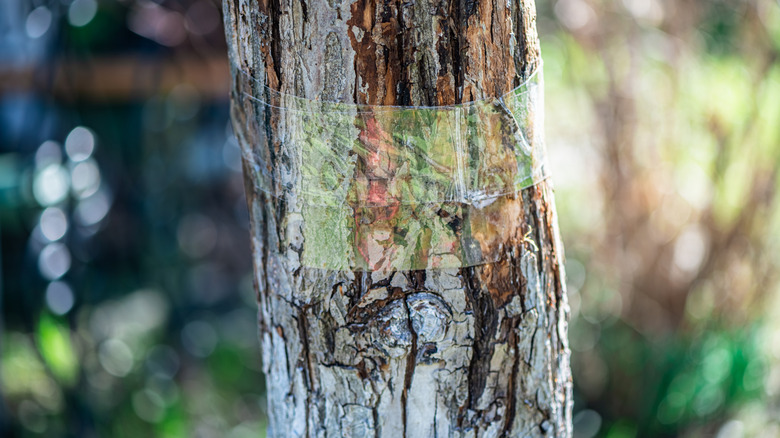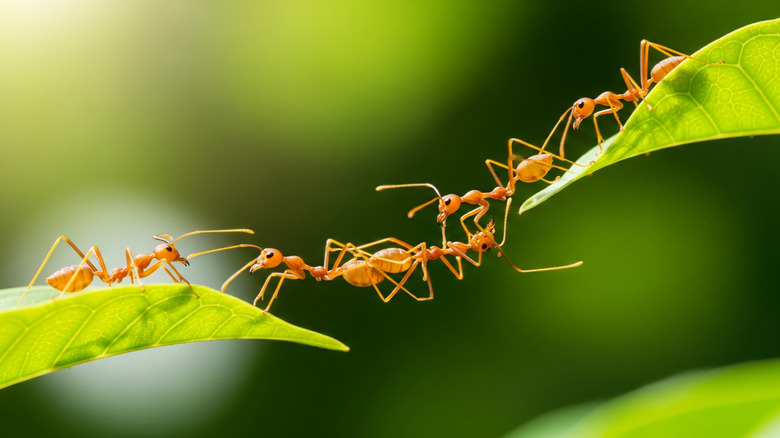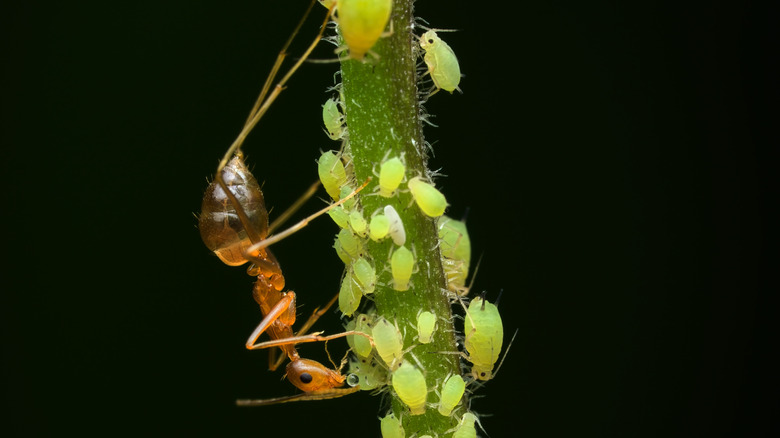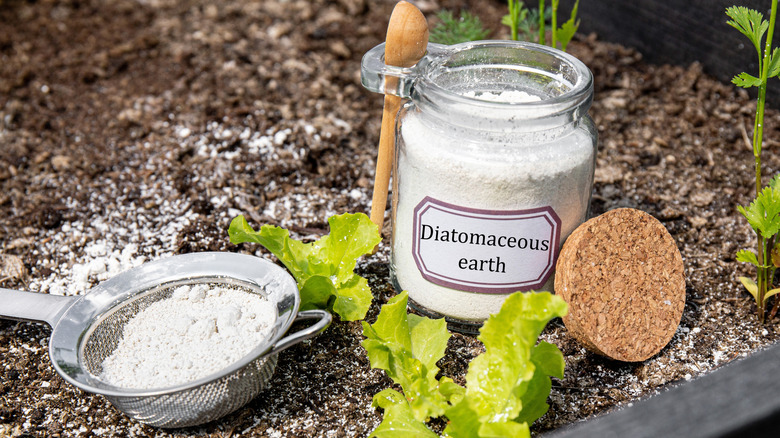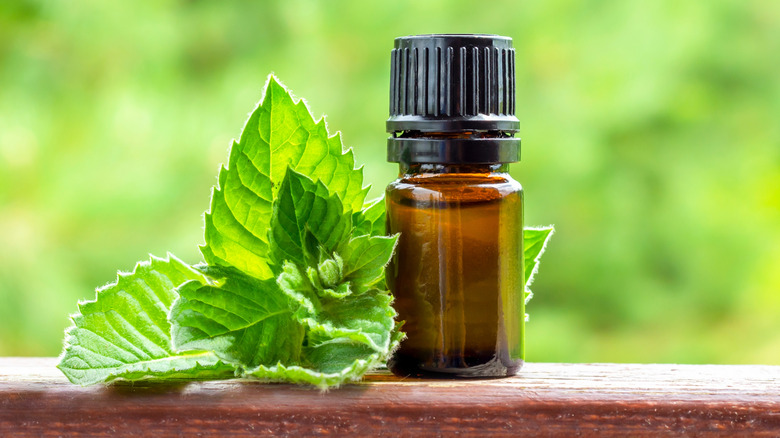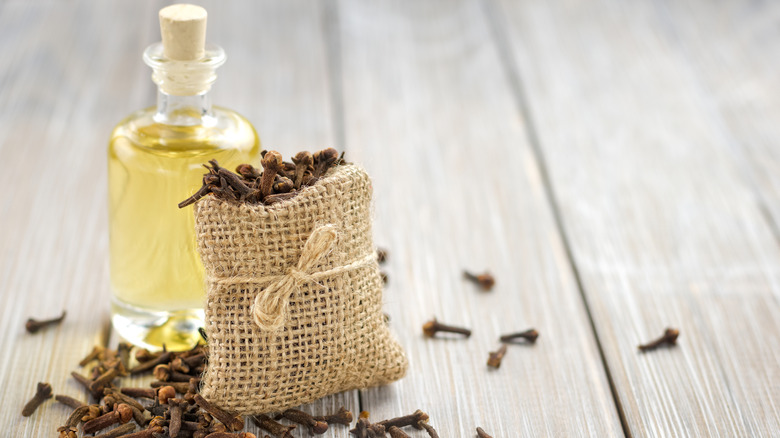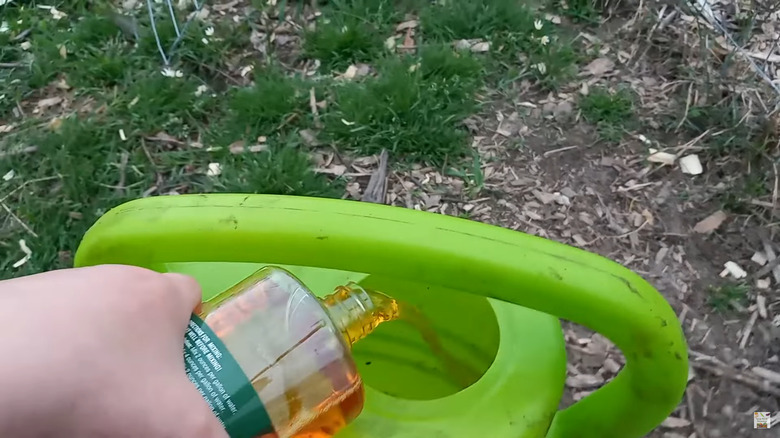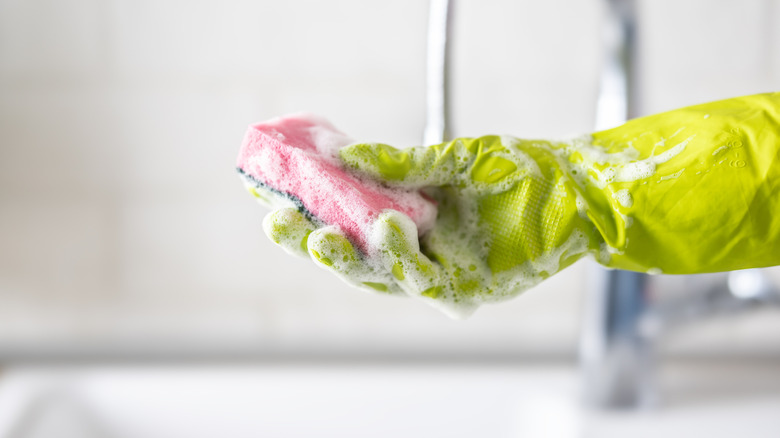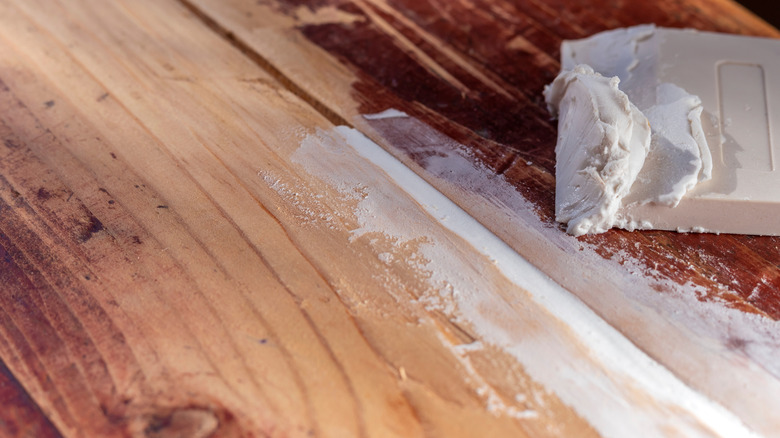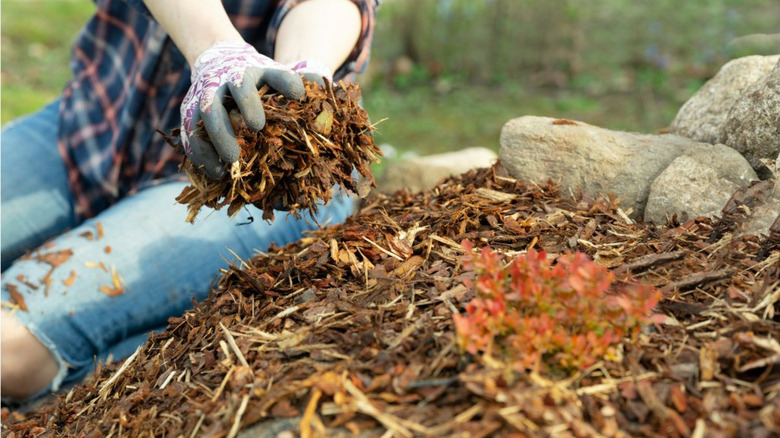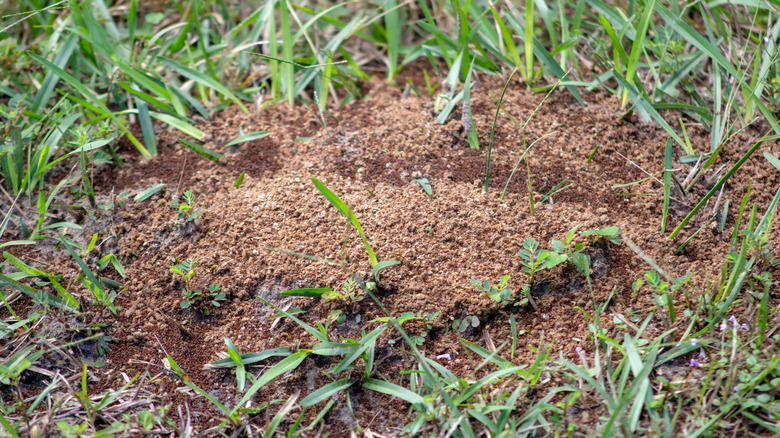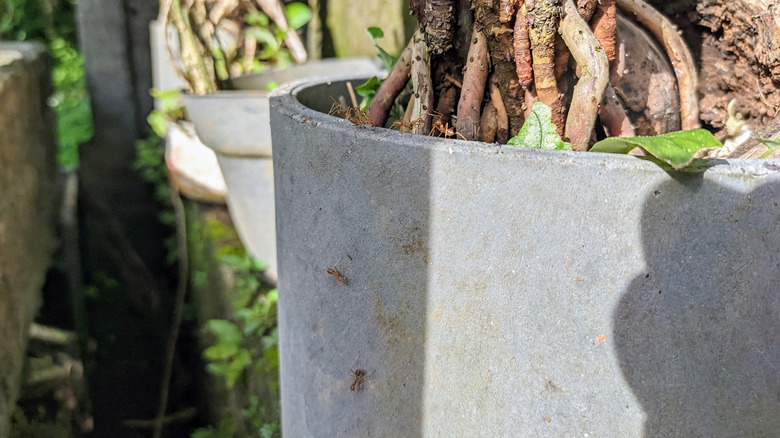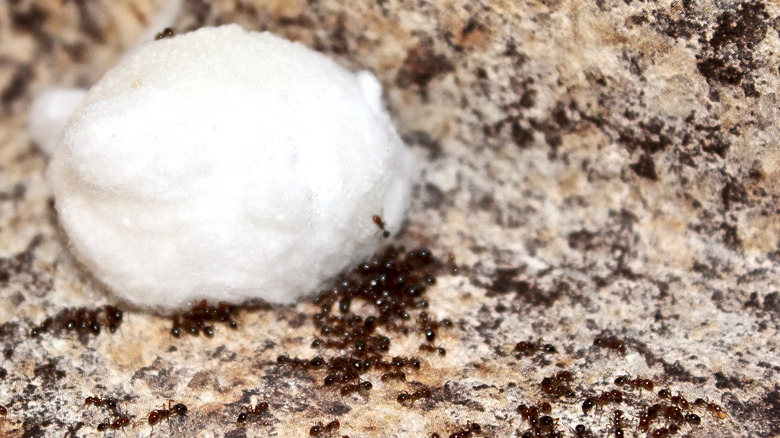16 Ways To Deter Or Remove Ants Without Killing Your Garden Plants
We may receive a commission on purchases made from links.
Depending on the species of ant, they can be a real pain in your garden. I know, because I'm a master gardener who specializes in organic growing and permaculture principles, so naturally controlling ants and other pests is a lifelong battle for me. Some species will cut leaves and feed on young plant tissue. Many species "farm" aphids, scale, and mealybugs for honeydew, which invites black sooty mold and weakens plants. They can also protect those pests from natural enemies, making outbreaks worse. Then, some species, like fire ants, pose nasty threats to people and pets when they bite. Plus, their behavior below ground can cause issues by damaging roots and displacing bulbs and tubers.
Keeping the ant population in check is vital, but it's essential to remember that ants are also incredibly important for healthy, balanced biodiversity, as they predate many other pests that are more damaging to your plants. Plus, ants aerate the soil as they excavate below the soil surface, improving drainage and bringing nutrients and minerals into the topsoil. So, yes, find ways to control ant populations if they're causing you issues, but avoid indiscriminately killing them, as they can actually be pretty useful.
The scent of cinnamon deters ants
Cinnamon's strong scent can confuse ants and prevent them from following their existing pheromone trails. So, you can use it to push foraging ants away from sensitive areas. Cinnamon is one of my favorite natural ant-repelling remedies, and I use it inside my home as well as in the garden. You can dust a light band of ground cinnamon around pots and bed edges, and refresh it after it rains. I also apply it to likely entryways into the greenhouse.
Cinnamon oil is much stronger than ground cinnamon or sticks, so use only as a light spot treatment on non-porous surfaces or barriers, not on blooms or tender foliage. Another reason I love cinnamon for deterring ants is that it contains cinnamaldehyde, a powerful antifungal that acts against several plant pathogens. This is handy in damp corners of the garden and can inhibit fungal pathogens when you've added it to the soil to deter ants. Plus, cinnamon has lots of uses around the home.
Sticky trunk barriers on trees and shrubs can help prevent climbing ants
Ants love to climb into canopies to farm aphids and scale for honeydew, so block their way. This simple trick stops other climbing pests, too. Wrap trunks with a protective collar like a tree wrap, heavy paper, or tape, then apply a sticky substance to it. Don't apply it directly on the bark in case it damages the tree. There are lots of options, but Tanglefoot's Tangle-Trap Sticky Coating is a popular choice. This keeps ants from reaching leaves and fruit where they protect sap-sucking pests. But remember that nature is unpredictable and debris may build up on the sticky stuff and create a "bridge" for the ants to cross. So, go stir the band with a stick every week or so to keep it fresh and sticky, and be ready to apply a new layer as needed.
Be gentle with young or thin-barked trees. Direct applications of sticky polybutene to trunks can crack bark over time, especially with citrus, so always use a wrap. I like to use a heavyweight paper secured with a little duct tape, with the sticky stuff applied over the top. In fact, this is a great way to repurpose wax paper around the house. The wax creates a nice barrier that prevents whatever product you choose from seeping through the paper and coming into contact with the tree.
Prune bridges to stop ants finding alternative routes
Sticky bands fail if ants can take another route, and they are smart and persistent little critters. Look for any branch or foliage that touches a fence, wall, trellis, neighboring plant, or the ground. Those contact points are the perfect bridges for ant traffic. Prune these back so the only path up is the wrapped, sticky trunk. It's a quick job that makes every other control you use more effective.
On fruit trees, skirt pruning, which means removing the low branches so the canopy doesn't touch the ground, also helps keep ants out of the canopy and improves air flow. After pruning, recheck that no outer twigs touch supports or neighboring plants. One overlooked crossing can rebuild a full ant trail in hours, especially when honeydew is available. Obviously, plants continue to grow, so recheck for new bridges regularly.
Control honeydew-producers like aphids, scales, and mealybugs
Ants aren't on your plants by accident. They're there for sugar. Aphids, scale, whiteflies, and mealybugs excrete honeydew, and ants will guard them from predators to keep the sugar flowing. It goes beyond protecting them, though. They literally "farm" them, biting the wings off to stop them from escaping, and removing or killing the weak, sick, or poor producers. Plus, some of the chemicals released from ants' feet actually tranquilize their "livestock".
Get rid of aphids and other honeydew-producing pests and you cut off the food source, which drops ant pressure fast. Start with a firm spray of water to dislodge soft-bodied insects, then use selective pruning to remove clustered hotspots. I'm also a big fan of companion planting or planting trap crops like nasturtiums that draw aphids and other soft-bodied pests that ants like to farm. Plant them in an area away from your main garden areas that you want to protect, and let the ants farm them as much as they want.
If needed, follow the label for horticultural oils or insecticidal soaps and aim for thorough coverage of infested surfaces while avoiding open blooms. But be selective and avoid indiscriminate products that kill all insects. Spraying water really does the job very well for dislodging these pests. Keeping ants off the plants with bands or barriers lets lady beetles, lacewings, and parasitic wasps do their job again and naturally control the honeydew producers.
Diatomaceous earth (DE) dust bands to kill and deter ants
Food-grade DE is a fine, mineral dust made from fossil diatoms. It's abrasive to insects' waxy cuticles, which leads to drying and death after contact. I love DE as pest control for ants, even though it does kill them. It's pretty gruesome in that it cuts through their exoskeletons and dehydrates them. But it's fast and effective. For ants, use a thin, dry band across ant trails at thresholds, pot rims, or along bench legs in a greenhouse. Reapply after rain or irrigation, since moisture clumps the dust and stops it from working effectively.
If you have pets and young kids, stick with a food-grade option such as Harris Diatomaceous Earth, as it's non-toxic. Avoid horticultural DE unless you know that little ones and animals won't come into contact with it. And avoid pool filter DE because it's not safe for use in the garden. Apply lightly and use a mask if you're working in close quarters. DE shines as a barrier and on exposed foraging paths. It's less effective as a mound treatment and won't reach queens deep underground, but it will kill any ants that cross it. Personally, I have found it to be effective where I broke open a nest and poured DE right on top, as it coated the exposed ants and their cocoons.
Peppermint oil to repel and kill ants and other pests
Peppermint oil can help break up active trails and keep ants away from entry points. In a lab study published by the National Library of Medicine, a 1% peppermint oil solution was the most effective deterrent among the treatments tested with Argentine ants. Use it sparingly on hard, non-plant surfaces like pot rims, bench legs, and greenhouse thresholds, but keep it off open blooms to protect pollinators. Plus, peppermint oil can have a herbicidal effect when used at high concentrations, so it's a smart plan to keep it off foliage.
Expect to reapply, as essential oil scents fade with sun, heat, and time. Growing peppermint around bed edges can offer a mild, background deterrent, but the oil is far stronger than the live plant. If you plan to bait nearby, don't place strong repellents right next to bait stations, as the smell can cut feeding and slow results.
Clove oil or powder is a fast acting ant killer and short-term repellent
Clove's main compound, eugenol, works fast on small groups of ants and provides short-term repellency. In a study on red imported fire ants published by The National Library of Medicine, clove powder caused complete mortality within hours, and eugenol was the fastest-acting compound evaluated. As with peppermint oil, use it in any places where you can avoid plant tissue and open flowers.
Eugenol is a registered pesticide and the active ingredient in some products, and is known for its strong odor and quick action, but it doesn't last long outdoors. And avoid it if you have cats, as many essential oils (including clove) are highly toxic to them. Before you go crazy with the clove oil, though, do note that it is an attractant for several beetle species, including the absolute menace, the Japanese beetle. So, if they are a problem in your area, skip this remedy.
d-Limonene (citrus oil) disrupts pheromone trails
Orange and other citrus oils rich in d-limonene act as contact insecticides. As a mound drench, d-limonene can kill many workers within minutes. However, it has little residual action, so it must thoroughly soak the mound to be effective. Use this away from desirable roots and garden beds, and only where you can control runoff. This citrusy oil is best to eliminate ants near paths, patios, or open ground, not within perennial borders.
Because the effect is contact-only, surviving queens or brood may allow the colony to rebound. So, repeat treatments or follow-up methods may be needed. Use citrus oils to shrink hot spots, then rely on sanitation, barriers, and, if needed, other remedies from this list to finish the job. I also use citrus peels to repel ants and to remove pheromone trails. Freeze peels on a flat tray, and store them in a bag in the freezer. Then just grab a handful when you need to refresh your repellents.
Clean pheromone trails to stop repeat visitors
Ants follow invisible scent highways. If you wipe those trails, scouts lose their map, and foraging slows down. A simple spritz of soapy water or a dilute vinegar wiped on decks, pots, railings, and greenhouse thresholds erases the smell and buys you time to place baits or set barriers.
I also use a vinegar spray on pathways to deter ants. It's also useful for stopping weeds from popping up in cracks between pavers and concrete, too, especially if you apply it on a hot, dry day. Focus on the start and end of trails, like door thresholds, pot rims, bench legs, and along edges where ants hug a line. Re-spray as needed and remember that fresh trails rebuild quickly when honeydew or food is nearby.
Seal entry points to stop ants getting in to begin with
Blocking access is one of the easiest wins. Add door sweeps or weather stripping around greenhouses so trails don't establish. In raised beds, check where edging meets posts. Tiny gaps act like tunnels. Sealing these forces foragers into the open, where sticky bands, DE, or baits work better.
Do a quick "ant audit" during peak activity: follow a few workers to see exactly where they enter and exit. Seal those points, then clean trails and place baits along the outside route if populations are high. For greenhouses, pay special attention to door thresholds and vent frames that shift with temperature; flexible sealants hold up best there.
Remove ripe fruit and manage mulch to discourage nesting
Food and shelter keep ants coming back. Pick up dropped or overripe fruit under trees and berry canes, sweep up fallen petals, and keep compost lids tight so sweet smells don't draw them in. Store pet food and seed in sealed containers, and rinse sticky tools, pots, and trellis clips at the end of the day. In beds along fences or foundations, pull mulch back a few inches so it doesn't touch wood or siding. This removes cozy, humid bridges and nesting places that ants love.
Sanitation won't eliminate a colony, but it shrinks the reward for foraging, which helps your other controls work better. If honeydew is present, combine cleanup with soft-bodied pest control so you cut the sugar at the source. Less easy food means fewer trails and slower rebuilds after you wipe them. You can also prevent nest build-up by regularly lightly turning your mulch to disrupt ant activity.
Nematodes that target ants can kill whole colonies
Entomopathogenic nematodes, tiny beneficial roundworms, can reduce ant activity when conditions are right. Species like Steinernema and Heterorhabditis carry symbiotic bacteria that infect ants. Research shows nematode-associated bacteria can produce compounds that deter ants, helping lower activity where they're active. But moisture is critical for them to move and survive. Keep the treated area evenly moist for 10 to 14 days so they can find hosts. If the soil dries out, nematodes die off, and results drop. Use fresh, live product, apply in the evening, and avoid direct sun.
Expect mixed results. They're best as a temporary knockback when foraging or small satellite nests are in damp soil, not a silver bullet for deep colonies. Use them to tip the balance, then employ other deterrent and control methods. I have used nematodes in a heavily infested area, but I don't particularly like using them as they may infect non-target species, too. Plus, eradicating ants at scale temporarily upsets the ecological balance, and, as soon as the nematodes die off, new colonies may move right back in.
Neem oil (azadirachtin) reduces foraging and confuses ant trails
Do not use neem oil if you have cats, as it's harmful if ingested. Neem products contain azadirachtin, which disrupts feeding and development in many insects. As a surface spray, it can deter foraging on treated areas and help with soft-bodied pests that attract ants. Use neem as a light, targeted treatment on non-porous, non-bloom surfaces where ants travel, like pot rims, bench legs, and greenhouse thresholds.
The oil is pretty strong and indiscriminate, so keep it off open flowers to protect pollinators. Although, do note that it doesn't harm bees. You can purchase certified products, like Harris Concentrated Neem Oil, online or at a garden center. Always follow the label and test a small area first. Evidence for direct, lasting ant control is mixed, so treat neem as a helper, not a standalone ant cure. It's most useful alongside aphid/scale management and trail cleanup, where reducing honeydew and breaking trails lowers the payoff for foraging.
Submerge ant-infested potted plants to drown the insects without hurting the plant
When a colony moves into potting mix, it's hard to reach it without harming the roots. And I do not advise using harsh chemicals in containers, inside or outside your home. Especially when the cure is ridiculously simple. Grab a bucket with no holes that's a little bigger than your pot. Put the potted plant into the bucket and fill the bucket with water until it's just over the level of the top of the pot. Very quickly, you'll see ants start dashing out of the soil. Or they'll simply drown if they have no other means of escape. If they climb the foliage, wash them off with a gentle spray from the hose. Let the plant soak for at least 15 minutes, or until you can't see any more live ants.
Once it's done, remove the potted plant and let it drain. You've eliminated the ants, thoroughly hydrated your plant, and, if you let it drain into another plant that needs a drink, you won't be wasting water, either. I've done this successfully to get rid of ants in houseplants and outdoor container plants for many years, and it's very effective.
Hot water effectively destroys ant mounds
It goes without saying that hot water poured over a plant will damage it — but near-boiling water poured directly onto mounds can kill many workers and some brood on contact, without affecting the rest of your garden. It's most useful for mounds in open ground, paths, or cracks, not in planting beds where roots and soil life could be harmed. Wear long sleeves and eye protection, and pour slowly to avoid splashing. Several small pours are safer than one big dump, and you may need to repeat if the colony rebuilds nearby.
Because hot water has no residual, surviving queens can relocate and start again. Treat this as a quick knockdown for inconvenient mounds, then follow with sanitation, trail cleanup, or baits around the area if ants remain active. Never pour near tree trunks or the root zones of perennials you care about, as hot water can scald fine roots and set plants back badly.
Boric acid bait stations destroys whole colonies
Low-dose borate baits are a great plant-safe way to reach queens. At around 0.5–1% boric acid in a sugary liquid, baits are slow-acting and non-repellent, so workers share them widely through the colony before dying. Place small, protected stations along active trails but away from pets, wildlife, and rain, and refresh them every few days. If ants lose interest, try a different sweet base or move stations slightly to match shifting trails.
Patience pays off. Colonies often decline over one to three weeks as queens are starved of workers and food. Don't contaminate bait areas with strong repellents the same day, or you'll cut down feeding. Keep honeydew pests in check at the same time, so ants don't have a better sugar source than your bait. Used with sanitation and barriers, low-dose borate baits give long-term relief without harming your plants or helpful insects nearby.
